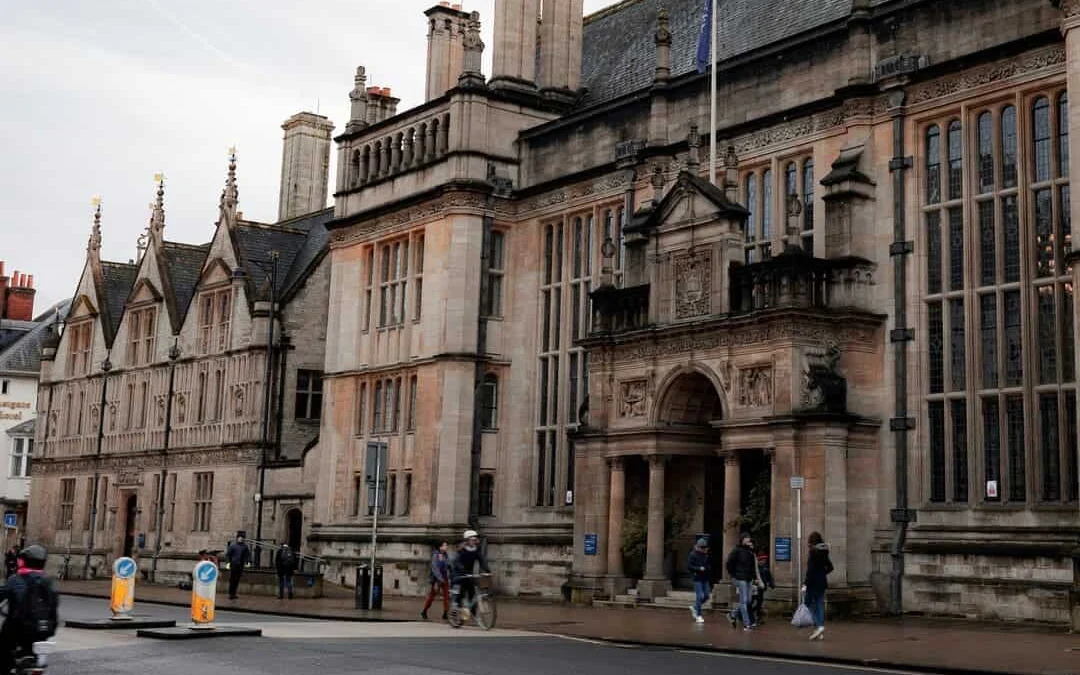Table of Contents
To get a USA student visa, you must submit proof of funds. To submit proof of funds is nothing but to prove that you can pay for the education and living costs in the USA. By doing this, you revisit the total cost of studying and better understand your finances. Plus, it allows the visa officials to filter out the students who need more funds who might misuse their student visas for other things. But to show proof of funds, How much bank balance is required for USA student visa? Let’s check that out in this blog.
| Minimum Balance For the USA Student Visa Overview | |
| Minimum Balance Required For USA Student Visa | Minimum USD 10,000 and a maximum of at least the amount covering your study and living expenses of at least two years. |
| Accepted Proof of Funds | -Education Loan -Scholarships -Parental Income -Personal Funding |
| Proof Of Fund Requirements | Proofs should have authorised signatures.It shouldn’t be more than 3 months old. It shouldn’t contradict to your stated balance and statements |
Minimum Balance Is Required For A USA Student Visa
There is no set amount of bank balance while applying for an F-1 visa in the USA. Usually, it’s a good idea to have at least USD 10,000 in your bank account, which should be reflected in your last 6-9 months of bank statements. It should exclude the USD SEVIS fee of USD 350 and the DS-160 form fee of USD 160, which is exclusively for F-1 visa applicants.
Different Ways To Show Your Proof Of Funds
There are no restrictions on how you can show proof of funds for a US student visa appointment. There are many flexible ways you can show your proof of funds, which include:
How Can I Sponsor My Education Abroad?
There are various sources of financial assistance for education that you can consider approaching. Common sponsors include family members, scholarships and grants, government-sponsored programmes, private organisations and foundations, and employer-sponsored programmes.
- Family: Your first source of support is typically your parents, who can be your primary sponsors.
- Relatives: Other family members such as grandparents, uncles, aunts, and cousins from both sides of the family can also provide sponsorship.
- Scholarships and Grants: These are excellent options for financing your education abroad. Various organisations and institutions offer scholarships and grants based on academic excellence, leadership potential, or financial need.
- Government-Sponsored Programmes: Students who require financial assistance for tuition and living expenses can explore government-sponsored programmes. These programmes provide support in the form of financial aid, housing, and other benefits to students wishing to study in their country.
- Private organisations and foundations: Many private organisations and foundations also provide scholarships and grants to international students. These entities may have specific eligibility criteria, such as academic excellence, leadership potential, or community involvement.
- Employer-Sponsored Programmes: Professionals seeking higher education may have the opportunity to participate in sponsored programmes offered by their employers.
Funding Proof Requirements For Different Funding Sources
Besides the funding sources given above, certain requirements must be met for different sources. Read through the table given below to know this in detail:
Reasons For US Student Visa Rejection For Proof Of Funds
| Funding Source Category | Requirements |
| Personal Funding | -Account must be in the student’s name. -Account balance should match or exceed the indicated funding amount. -Account statement not older than 90 days. Statement signed or stamped by the financial institution. |
| Education Loan | – Account must be in the sponsor’s name. – Account balance should meet or exceed the indicated funding amount. – Account statement within 90 days old. – Statement signed or stamped by the financial institution. |
| Government or Sponsoring Agencies | – Must identify the sponsoring agency. – Must confirm the availability of awarded funds for the applicant’s first year. – Clearly state the awarded amount and recipient’s details. documentation from the sponsoring agency. |
| Scholarships/Fellowships | – Funding must be confirmed for the applicant’s first year of university. – Type of support (e.g., teaching/research assistantship, fellowship) is clearly indicated. – Official documentation from the university. |
Proof of funds is a crucial step in the US visa system. Hence, you should not neglect the following vital reasons for F1 visa rejection:
- You must show enough money to cover your living costs, studies, and travel expenses for at least two years. Your visa might get rejected if your bank account or bank statements do not show sufficient funds.
- The source of funds must be well documented with solid proof of your having the money, such as an education loan sanction letter, scholarship letter, employment pay slips, etc.
- The funds must be readily available. Any asset, like real estate, gold, etc., would not be considered.
- You must provide proper information about your financial documents and situation. If the stated amount and the financial documents don’t match, your visa might be rejected.
Difference Between I20 and F1 Visa
The I20 and F1 visas are different but related to study in the USA. While the I20 is a paper document required for an F1 Visa application, the characteristics given below are their characteristics and the I20 process for an F1 visa:
| I20 Form | F1 Visa |
| I20 form is given by the USA universities once you get admission. | F1 Visa is a non-immigrant visa for full-time students studying in the USA universities. |
| It is certified for the eligibility of non-immigrant students. | It is an actual visa stamp placed in the student’s passport by a U.S. embassy. |
| The I20 contains information about your course, source of funds, tuition fees, etc. | To get an F1 visa, you must submit the I20 form and documents like proof of funds, admission letter, etc. |
| It is needed to apply for an F1 Visa | The F1 visa allows you to live in the USA as a student until your programme isn’t completed. |
Financial Proof Documents For I20 Visa
If you are applying for an I20 visa, it’s obvious that you’ll need to show the proof of funds for that too. Hence, it’s important to submit the financial documents given below:
- Copy of savings bank statement duly attested by bank
- Copy of fixed deposits, if any, duly attested
- Evidence of property or other assets owned, if any
- Scholarship grant or loan offer letter, if applicable
- Attested copy of salary slips, ITR statement, PF/PPF/passbook statements, if applicable
How To Apply For The US Student Visa From India?
To apply for a US student visa, you need to demonstrate sufficient funds to support your education and stay in the United States. Here’s a simplified guide on the application process for students from India:
- Receive Your I-20: Once you are accepted by a US university, they will issue you an I-20 form. This document is crucial for your visa application, as it outlines your study plans and provides details about your intended stay.
- Pay the SEVIS Fee: You will need to pay a SEVIS fee of $350 (Form I-901) for the Student and Exchange Visitor Program (SEVP). This fee covers processing and maintenance charges.
- Complete the DS-160 Visa Application: All prospective international students must fill out a DS-160 form for their nonimmigrant visa application online. The fee for the DS-160 form is $160.
Ensuring you have all required documents and fees ready will help streamline your visa application process.
That’s it for the blog! If you want to know more about cracking a US Visa interview and securing funding for it, contact UniCreds!
FAQs
Q1. How much bank balance is required for an American student visa?
There are no specific restrictions on the bank balance; however, it’s recommended that the bank maintain a balance of USD 10,000.
Q2. How many months of bank statements are required for a US student visa?
Three months of bank statements are required for a US student visa.
Q3. How much money is needed for a student visa in the USA?
You need at least USD 10,000 for a student visa in the USA. But there is no hard and fast rule. The balance should be such that it covers the cost of your education and living.
Q4. Is it required to show my bank statement for an F-1 visa?
Yes, it’s essential to show your bank statement for an F1 Visa as proof of funds.
Q5. Does the embassy check bank statements at the time of the visa interview?
Yes, the embassy goes through all of your financial documents during your visa interview.
Q6. What should I do if my visa application is rejected?
If your visa application gets rejected, you can either re-apply or file a lawsuit against the rejection.










0 Comments